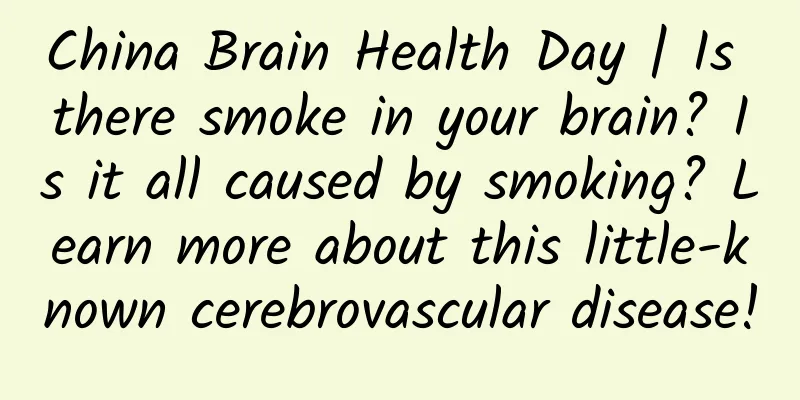Benefits of Ginseng Extract

|
We all know that ginseng is a superior tonic with high nutritional value. It is very good for those who are weak. However, most people choose to soak ginseng in wine or stew it in soup, because its nutrients will be more easily absorbed. In fact, there are essences in life, which can be extracted. So what are the effects of ginseng extract? Ginseng extract is derived from the dried roots and rhizomes of the Araliaceae plant Panax ginseng. It is a common tonic Chinese medicine and a very precious variety of Chinese medicinal material. Ginseng was first seen in "Shennong's Herbal Classic", where it was listed as a top-grade product, saying that it "replenishes the five internal organs, calms the spirit, stabilizes the soul, stops panic, eliminates evil spirits, improves eyesight and intelligence, and long-term use makes the body lighter and prolongs life." Ginseng has the effect of preventing and treating many diseases and has a nourishing and strengthening effect on the human body. It is used in modern clinical practice to treat diseases such as weak pulse, cold limbs, shock caused by various reasons, heart failure, etc. The chemical components of ginseng include saponins, sugars, volatile components, organic acids and their esters, proteins, enzymes, sterols and their glycosides, polypeptides, lignin, nitrogen-containing compounds, flavonoids, vitamins, inorganic elements and other components. The main active ingredients are ginsenosides and ginseng polysaccharides. This article mainly elaborates on the active ingredient ginsenoside. Ginsenosides are considered to be the main active substances in ginseng, with a content of about 4%. Ginsenosides belong to triterpenes, which are glycoside compounds composed of aglycones and sugars. According to the different aglycones, ginsenosides can be divided into three types: one is the oleanane-type pentacyclic triterpenoid saponin R o, whose sapogenin is oleanolic acid; the other two are the ginsenodiol-type saponins (such as R b1, R b2, R c, R d, F2, R g3, R h2, etc.) and the ginsenotriol-type saponins (such as Re, R g1, R g2, R f, R h1, etc.), both of which belong to the dammarane-type tetracyclic triterpenoid saponins. They account for the majority of ginsenosides and are the main active ingredients. Modern pharmacological studies have shown that ginsenosides have good pharmacological activities such as anti-tumor, anti-inflammatory, antioxidant and inhibition of cell apoptosis. The specific pharmacological activities are summarized as follows. ①. Impact on endocrine and immune systems. Related studies have shown that intraperitoneal administration of GTS, Rb2, Rg1 and Rd can reduce the level of increased plasma IL-6 content caused by immobilization stress. Rb2 and Rd can significantly reduce the increase in IL-6 content in macrophages caused by norepinephrine and epinephrine, while Rg1 significantly reduces the increase in IL-6 content in macrophages caused by epinephrine. That is, ginsenosides have certain activity in regulating immunity and endocrine. ②. Effect on the circulatory system. Ginseng has the bidirectional effects of regulating blood pressure, strengthening the heart and protecting the myocardium. Ginsenoside R b1 can effectively inhibit ventricular remodeling and protect cardiac function in rats with acute myocardial infarction. Ginsenoside Rg1 in the treatment of AMI rats can significantly increase the number of stem cells in the peripheral blood, promote stem cells to home to the infarcted myocardium and differentiate into cardiomyocyte-like cells, reduce the infarct area, significantly alleviate ventricular remodeling, and protect the basic structure of the ischemic myocardium. ③. Effects on the central nervous system. Ginseng has a dual effect of sedation and excitation, which is related to the functional state of the nervous system when taking the medicine, and is also related to the dosage and different components of ginseng. The mixture of ginsenosides R b and R c has sedative and analgesic effects on the central nervous system of mice, as well as central muscle relaxation, cooling, and reduction of spontaneous activity. Ginseng decoction has an antagonistic effect on many stimulants and can reduce the inhibitory effects of central nervous system depressants (chloral hydrate, chlorpromazine, etc.). Ginsenosides R g1, R g2 and the mixture of R g2 have an excitatory effect on the central nervous system, while large doses have an inhibitory effect. Studies have shown that ginsenoside Rg1 can significantly improve the passive avoidance of mice induced by amyloid peptide, change the activity of AChE, and it is believed that the effect on the choleretic system may be one of its mechanisms of action on the central nervous system. ④. Anti-tumor effect. Ginsenoside Rg2 inhibits the growth of B16 melanoma, and its mechanism may be through inhibiting tumor angiogenesis and blocking tumor cells from entering the division phase. Ginsenoside Rg3 has a moderate reversal effect on the DDP resistance of cisplatin-resistant human lung adenocarcinoma cell line A549 in a time-dependent manner. Ginsenoside R h2 has a significant growth inhibitory effect on the human laryngeal cancer cell line Hep-2 and can cause its G 1 phase cell cycle arrest. This suggests that G1 cell cycle arrest may be one of the mechanisms of the anti-tumor effect of ginsenoside R h2. Ginsenoside R h2 has the effects of inhibiting proliferation and inducing differentiation of liver cancer cell SM M C-7721. Ginsenoside R h1 has stronger antitumor effects in vivo and in vitro than its precursor R g1. ⑤. Anti-aging. Ginsenosides have significant anti-aging effects on mouse skin and can significantly increase the activity of skin antioxidant enzymes and enhance the activity of fibroblasts. Ginseng total glycosides can enhance the activity of antioxidant enzymes in mice, increase the quality of immune organs, and have a good anti-aging effect. |
<<: The role and efficacy of Yang Tie Ye
>>: The efficacy and function of Platycladus orientalis fruit
Recommend
The efficacy and function of crown lip flower
Crowned lip flower is a kind of traditional Chine...
The efficacy and function of Ganoderma lucidum
When the fruit of the Chinese magnolia is ripe, i...
What are the effects and functions of Rhodiola rosea root?
As people in modern society pay more and more att...
What are the effects and functions of taurine?
Taurine is an amino acid, which is actually an in...
Traditional Chinese medicine for removing dampness and turbidity
The main Chinese patent medicines for removing da...
The efficacy and function of Chinese spirea
Chinese Spiraea In our lives, Chinese Spiraea has...
Chuanxiong Qingnao Granules
Medicine is very common, and it is necessary to c...
What diseases does Houttuynia cordata treat
Houttuynia cordata can treat cough with phlegm an...
[One Belt, One Road Story] The "pioneers" heading towards the sun
"A lone smoke rises straight in the desert, ...
Can you drink "sugar-free drinks" without getting fat? Sorry, it's not what you think
Some people may have noticed that regarding sugar...
Latest discovery: There are not only "three bodies" in the universe, but also terrible "devourers"
Recently, The Three-Body Problem has become a hot...
Who is the first animal in the world to make active sounds? When life began to chirp
Author: Global Science We are used to the fact th...
Will there be more extreme rainstorms in the future? Here is the explanation
Produced by: Science Popularization China Author:...
The efficacy and function of lizard
Many people choose lizards because of their high-...
Now! Think back immediately to what you had for lunch the day before yesterday!
Now! Right now! Think back to what you had for lu...









